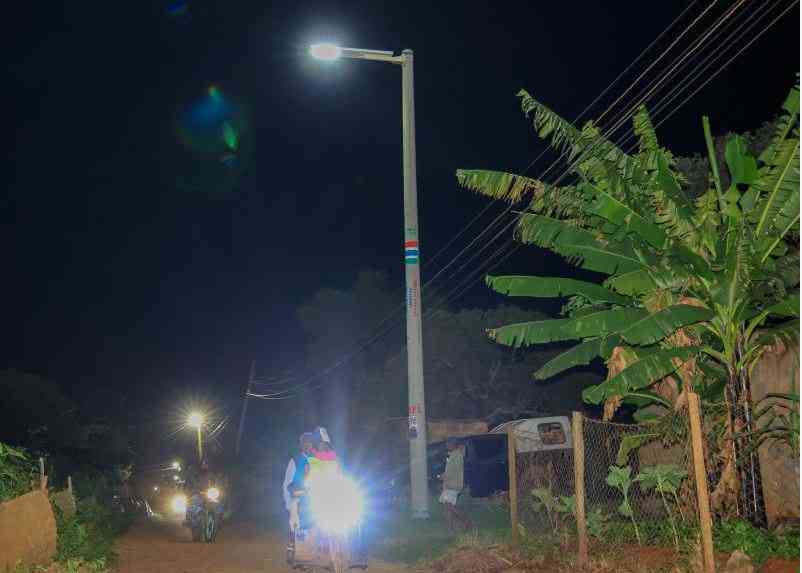Amid concerns from the Office of the Auditor General about the unsustainable costs of electricity for grid-powered streetlights, counties are turning to solar alternatives to ease the financial burden.
Kiambu County is among the first to take the lead, with Governor Kimani Wamatangi recently completing the first phase of installing solar streetlights in all 60 wards as part of his ‘Angaza Kiambu’ initiative.
The county has so far installed 6,000 solar-powered streetlights. The governor has further declared a complete halt to the installation of electricity grid-powered lights, aiming for full off-grid street lighting by 2026.
Governor Wamatangi announced that an additional 8,000 solar streetlights will be rolled out by the end of this year, in a programme set to be executed in two phases.
He explained that the decision to transition from the national grid was driven by the county’s escalating electricity bills and high maintenance costs, which have been averaging Sh300 million annually for street lighting alone.
“Our goal is to migrate the county to renewable energy to save development funds that would otherwise be spent on paying electricity bills. This also aligns with climate change mitigation efforts and supports Sustainable Development Goal 7, which calls for clean and affordable energy,” said Wamatangi.
He further noted that the current financial burden was unsustainable, diverting much-needed resources away from essential services, such as the supply of medicines and construction of critical infrastructure.
Over the years, Kiambu has struggled with ballooning power bills, often resulting in disconnections from the national grid due to unpaid arrears.
According to the county’s Head of Public Works and Utilities, Eng. Virginia Kahonge, Kiambu currently has 19,621 grid-connected streetlights. These contribute to an annual bill of over Sh260 million, with an additional Sh50 million required for routine maintenance.
She added that county hospitals alone consume electricity worth over Sh1.2 billion annually, while administrative offices and fire stations incur monthly bills totalling Sh1.7 million. Water companies within the county spend roughly Sh200 million per year on power—expenditures, which she described as unsustainable.
“Once installed, solar systems incur minimal maintenance costs and, crucially, no monthly bills. This shift will lead to significant savings, allowing us to redirect funds to areas that directly benefit our residents,” Eng. Kahonge said.
She added that solar-powered lights have a lifespan of up to 20 years, significantly longer than the five-year average for grid-powered lights. Solar units are also more reliable, less prone to vandalism and insect attraction, and require fewer repairs.
Wamatangi has also ordered a gradual transition to solar for all county installations, including hospitals, government buildings, and water infrastructure projects.
Meanwhile, Auditor General Nancy Gathungu has flagged Nyeri County for spending approximately Sh100 million on grid-powered streetlights in the last financial year. In her 2023–2024 audit report, she warned that Governor Mutahi Kahiga’s administration may struggle to settle future electricity bills, potentially resulting in disconnections.
Stay informed. Subscribe to our newsletter

























